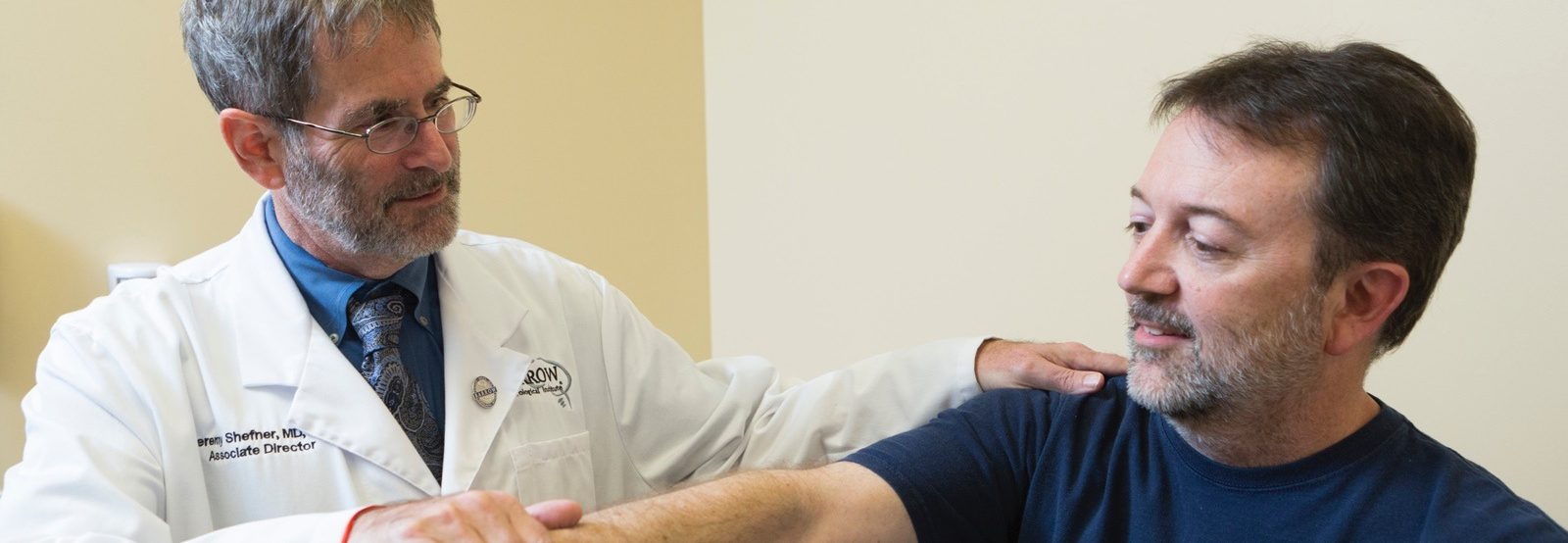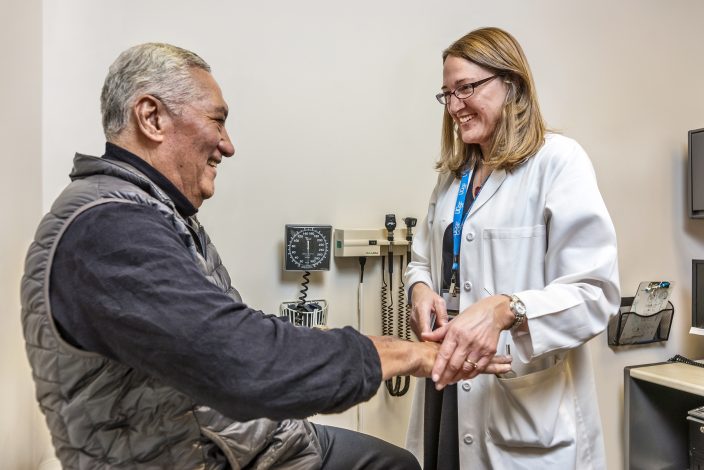
About ALS and Motor Neuron Disease
Motor neuron diseases (MNDs) are a group of neurological disorders that result in the dysfunction and eventual death of motor neurons in adults and children. Motor neurons are specific types of nerve cells that control voluntary muscle activities such as those involved in speaking, swallowing, arm and hand use, walking, and breathing. In adults, symptoms of these disorders most often appear after age 40 years, while in children – particularly in inherited forms of the disease – symptoms may begin at any age from birth onward.

In the US, MND generally refers to amyotrophic lateral sclerosis (ALS), or Lou Gehrig's disease. In the UK, motor neurone disease refers to both ALS specifically (the most common form of MND) and to the broader spectrum of MNDs, including progressive bulbar palsy (PBP), primary lateral sclerosis (PLS), hereditary spastic paraplegia (HSP), and progressive muscular atrophy (PMA). In children, MND usually refers to the genetic disorder spinal muscular atrophy (SMA), although there are childhood-onset forms of ALS and HSP.
To move a voluntary muscle, two types of motor neurons are involved: upper motor neurons (UMNs) that connect the brain movement areas to the brainstem (lower portion of the brain) or spinal cord, and lower motor neurons (LMNs) that connect the brainstem or spinal cord to the muscles. MNDs are classified based on the major site of motor neuron abnormality. ALS most commonly affects both UMNs and LMNs; PBP is a subtype of ALS in which the affected motor neurons are limited, as far as can be determined, to those supply muscles in the bulbar region (speech and swallowing); PMA is limited to LMNs; PLS and HSP are disorders exclusively of UMNs.

Amyotrophic Lateral Sclerosis (ALS)
ALS is a rare disease, occurring in 2 per 100,000 people per year. In the United States, approximately 5,000 – 6,000 people every year are diagnosed with ALS, but the prevalence (the number of individuals living with ALS at any given time) is approximately 6 per 100,000 people. The lifetime risk of developing ALS is about 1 in 400 and is higher in men than in women. The average onset of the disease is approximately 55 years, though the distribution is broad enough that ALS can be seen in teenagers and adults 80 years and older.
People with ALS experience progressive weakness in muscles responsible for arm and leg movement, speaking, swallowing, and breathing. As LMNs are lost, the muscles that they supply become small (“atrophy”) and exhibit spontaneous twitching (“fasciculations”). UMN loss causes stiffness, called “spasticity,” which results in slow and poorly coordinated movements. Sensory functions – such as sight, smell and taste – remain intact, and significant pain or numbness is not typical. About half of people with ALS develop abnormalities of cognition and behavior, which in about 15% are severe enough to meet criteria for a type of dementia termed frontotemporal dementia.
The average survival from onset of symptoms with ALS is only about three years, although 20% of affected persons survive at least five years and about 10% survive for ten years or more. There are limited numbers of medications that can alter the natural history of ALS, and there are no medications that can restore strength or cure the disease. The mainstay of treatment is multidisciplinary care, focusing on the management of symptoms to permit the best possible quality of life. Many new treatments are currently in development and undergoing clinical trials.
ALS usually occurs in the absence of a family history of the disease (sporadic ALS), though about 10% of affected persons have a close relative with ALS (familial ALS). In about 60-70% of families with ALS, specific disease-causing gene mutations have been identified; these mutations can be recognized by a simple blood or saliva test. Most ALS that is familial is transmitted in an “autosomal dominant” manner, meaning that each child or sibling of an affected individual has a 50% probability of inheriting the genetic variant and most likely developing ALS. The gene variants that have been identified in those with familial ALS are also present in about 10% of individuals with sporadic ALS, placing the children and siblings of that subgroup at the same risk of ALS as those with family histories of ALS. However, for most children and siblings of persons with sporadic ALS, for whom no ALS genetic mutations are found, the risk of developing ALS is low. The most common gene mutations causing ALS are in the genes C9ORF72 and superoxide dismutase 1 (SOD 1). How these mutations cause disease is the focus of intense research.

Primary Lateral Sclerosis (PLS)
PLS is much less common than ALS. Because it affects only UMNs, leaving LMNs intact, patients develop muscle stiffness (“spasticity”) and weakness that results in an inability to use their muscles effectively despite the lack of muscle atrophy. PLS progresses more slowly than ALS, and survival commonly is longer. However, some people who initially appear to have PLS will, with time, develop LMN loss and transition to ALS, with more rapid development of muscle weakness and atrophy. Usually this occurs in the first four years after onset of symptoms but rarely can occur farther into the disease process. The treatment of PLS is focused on symptom relief, as no medications are available at this time to slow, stop, or reverse the disease.

Hereditary Spastic Paraplegia (HSP)
HSP is a group of rare inherited neurological disorders characterized by spasticity and weakness in the legs, resulting in progressive difficulty walking that ranges from mild to the need for a cane or walker to complete loss of walking ability. Our understanding of the genetics continues to increase, but a lack of family history is not uncommon because HSP may be inherited in a dominant, recessive, or x-linked fashion. There are more than 80 different genetic types of HSP, some of which are “uncomplicated” (HSP only) and others of which are “complicated” (associated with other neurological symptoms). Onset of symptoms ranges from early childhood to adulthood. Lifespan is not shortened. When HSP is present in multiple family members, the age of onset and severity of symptoms can differ between affected individuals. It is estimated that there are up to 20,000 people in the United States living with the disorder. Treatment of HSP is focused on symptom relief, particularly control of spasticity and techniques or equipment to maximize safety and independence. No treatments are available currently to stop, slow, or reverse the disease.